 Technology peripherals
Technology peripherals
 AI
AI
 SDXL Turbo and LCM bring the era of real-time generation of AI drawings: as fast as typing, images are presented instantly
SDXL Turbo and LCM bring the era of real-time generation of AI drawings: as fast as typing, images are presented instantly
SDXL Turbo and LCM bring the era of real-time generation of AI drawings: as fast as typing, images are presented instantly
Stability AI launched a new generation of image synthesis model - Stable Diffusion XL Turbo on Tuesday, which has aroused enthusiastic response. Many people say that using this model for image-to-text generation has never been easier
Enter your ideas in the input box and SDXL Turbo will respond quickly and generate the corresponding content without having to Other operations. No matter you input more or less content, it will not affect its speed.
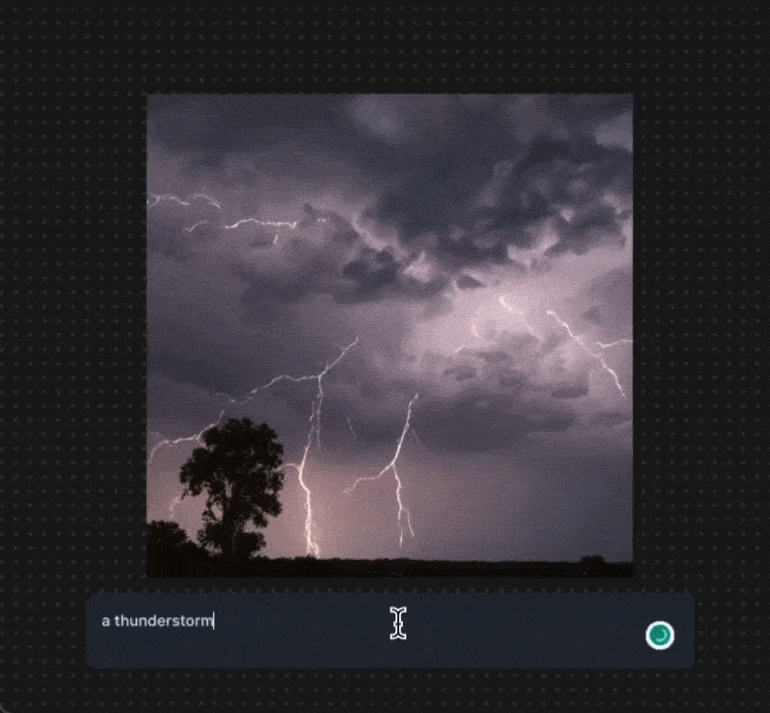

You can use the Some images are created more precisely. Just take a piece of white paper and tell SDXL Turbo that you want a white cat. Before you finish typing, the little white cat will already appear in your hands
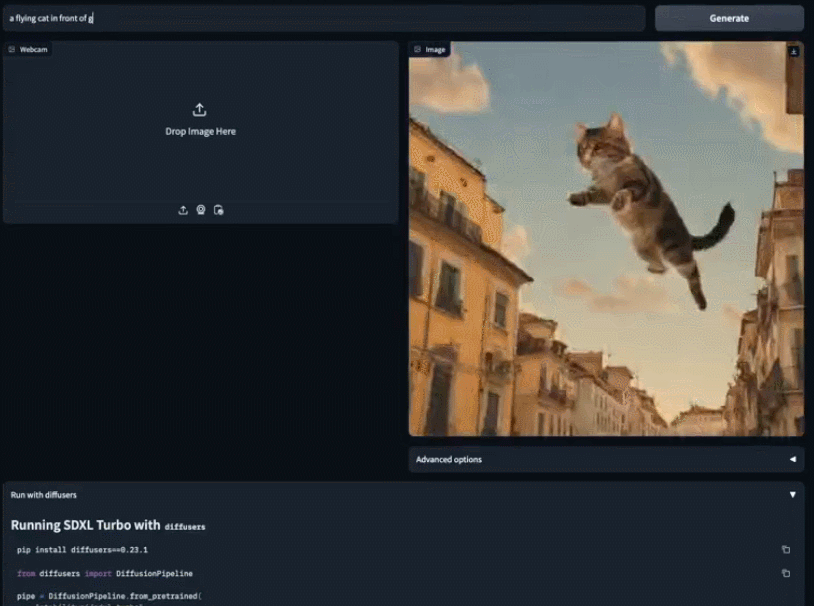
The speed of the SDXL Turbo model has reached an almost "real-time" level, which makes people wonder: whether the image generation model can be used for other purposes
Someone directly connected to the game and got a 2fps style transfer screen:

##According to the official blog, on the A100, SDXL Turbo can Generates 512x512 image in 207 ms (on-the-fly encoding single denoising step decoding, fp16), of which a single UNet forward evaluation takes 67 ms.
In this way, we can judge that Vincent Tu has entered the "real-time" era.
Such "instant generation" efficiency looks somewhat similar to the Tsinghua LCM model that became popular not long ago, but the technical content behind them is different. Stability detailed the inner workings of the model in a research paper released at the same time. The research focuses on a technology called Adversarial Diffusion Distillation (ADD). One of the claimed advantages of SDXL Turbo is its similarity to generative adversarial networks (GANs), particularly in generating single-step image outputs.

Paper details
Simply put, adversarial diffusion distillation is a general method that reduces the number of inference steps of a pre-trained diffusion model to 1- 4 sampling steps while maintaining high sampling fidelity and potentially further improving the overall performance of the model.
To this end, the researchers introduced a combination of two training objectives: (i) adversarial loss and (ii) distillation loss corresponding to SDS. The adversarial loss forces the model to directly generate samples that lie on the real image manifold on each forward pass, avoiding blurring and other artifacts common in other distillation methods. The distillation loss uses another pretrained (and fixed) diffusion model as the teacher, effectively leveraging its extensive knowledge and retaining the strong compositionality observed in large diffusion models. During the inference process, the researchers did not use classifier-free guidance, further reducing memory requirements. They retain the model's ability to improve results through iterative refinement, an advantage over previous single-step GAN-based approaches.
The training steps are shown in Figure 2:

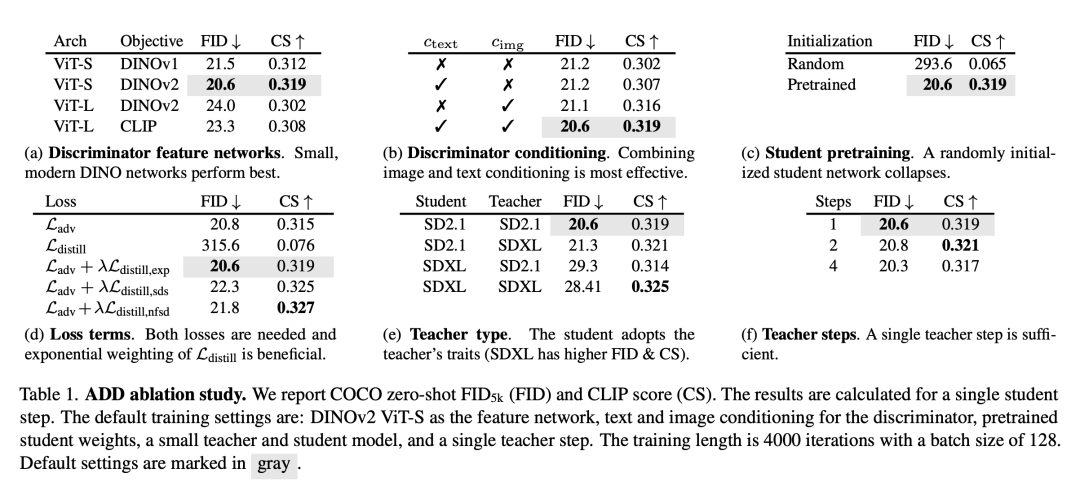 #
#
Next is a comparison with other SOTA models. Here the researchers did not use automated indicators, but chose a more reliable user preference evaluation method. The goal was to evaluate prompt compliance and overall image.
To compare multiple different model variants (StyleGAN-T, OpenMUSE, IF-XL, SDXL and LCM-XL), the experiment uses the same prompt to generate the output. In blind tests, the SDXL Turbo beat the LCM-XL's 4-step configuration in a single step, and beat the SDXL's 50-step configuration in just 4 steps. From these results, it can be seen that SDXL Turbo outperforms state-of-the-art multi-step models while significantly reducing computational requirements without sacrificing image quality

Presented here is a visual chart of the ELO score regarding inference speed

at In Table 2, different few-step sampling and distillation methods using the same base model are compared. The results show that the ADD method outperforms all other methods, including the 8-step standard DPM solver
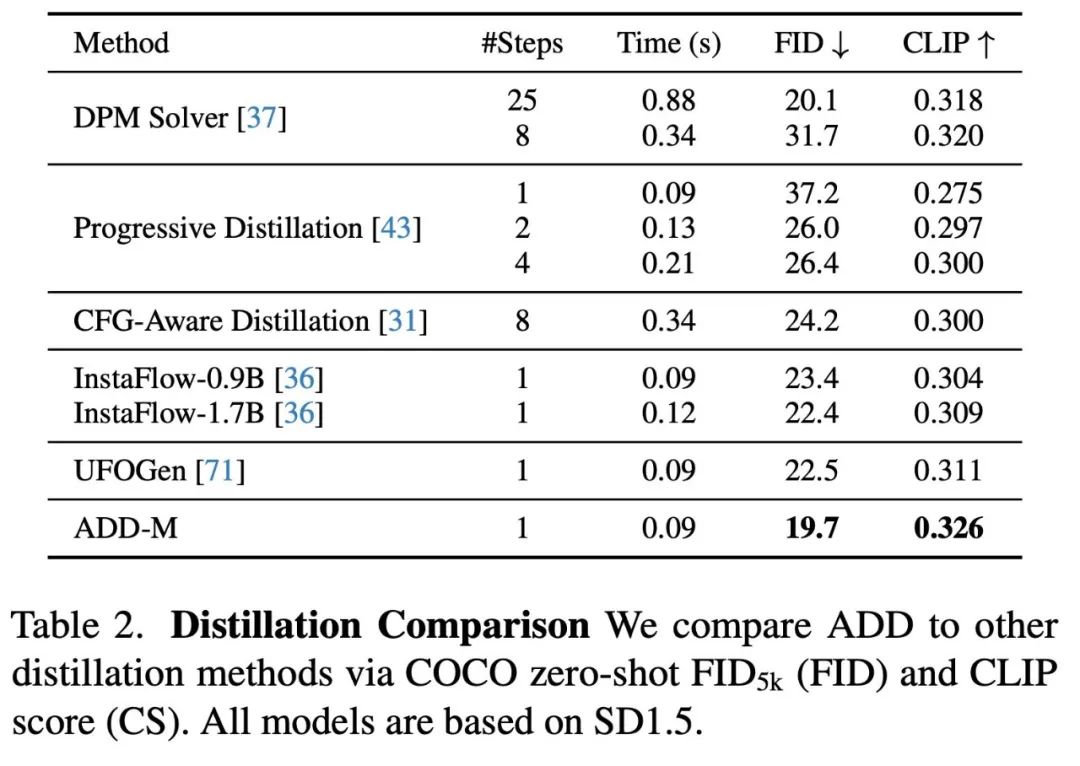
as a quantitative In addition to the experimental results, the paper also shows some qualitative experimental results, demonstrating the improvement capabilities of ADD-XL based on the initial sample. Figure 3 compares ADD-XL (1 step) with the current best baseline in few-step schemes. Figure 4 describes the iterative sampling process of ADD-XL. Figure 8 provides a direct comparison of ADD-XL with its teacher model SDXL-Base. As user studies show, ADD-XL outperforms the teacher model in both quality and prompt alignment.
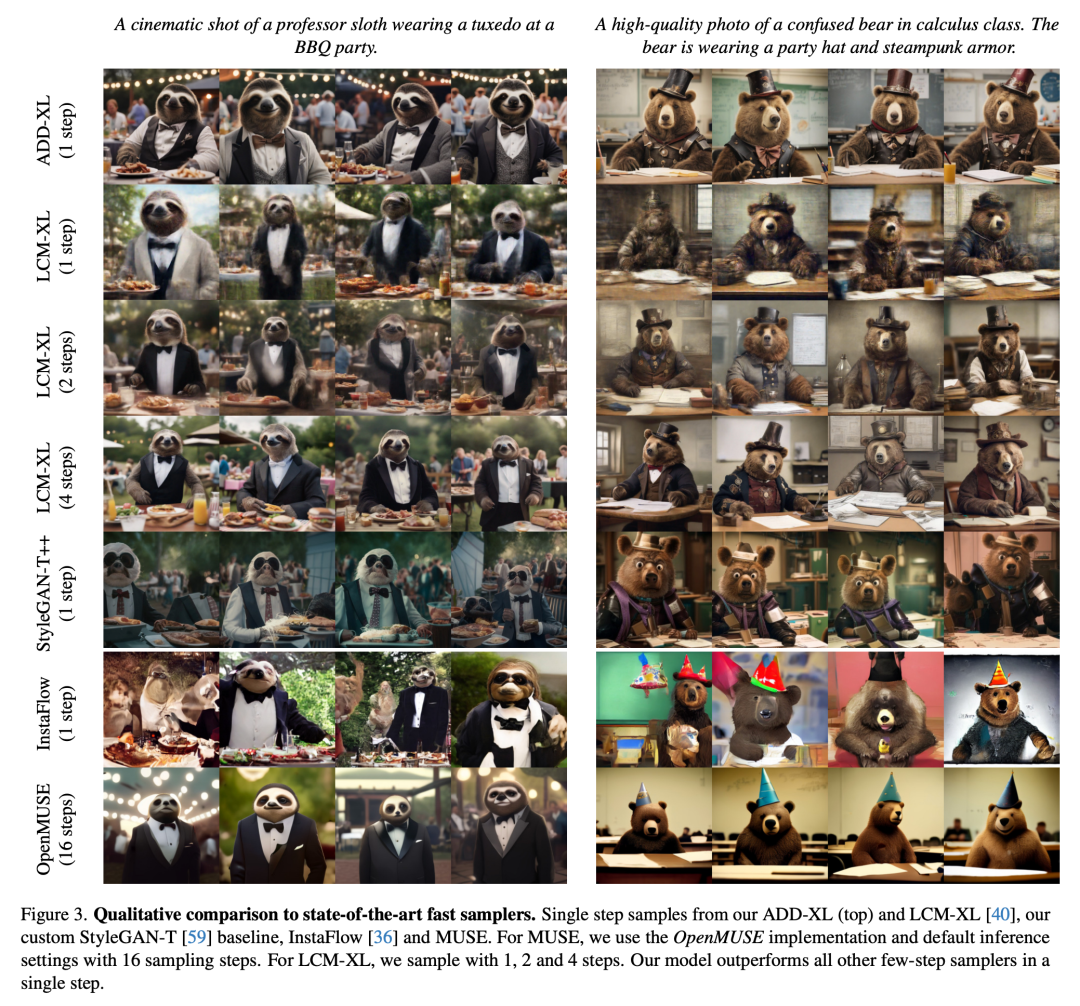
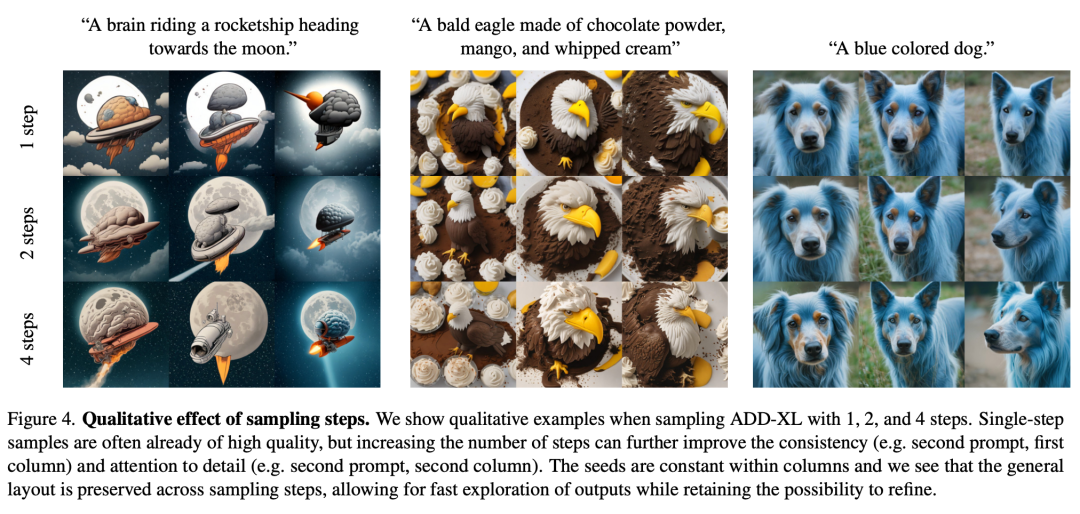
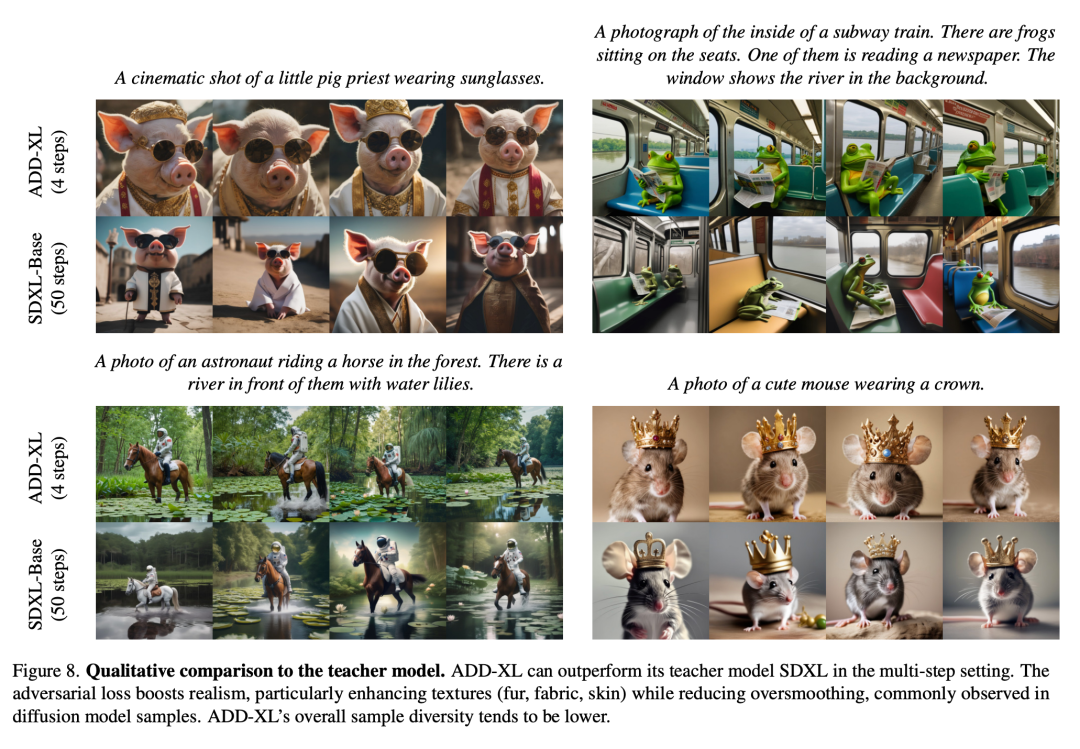
#For more research details, please refer to the original paper
The above is the detailed content of SDXL Turbo and LCM bring the era of real-time generation of AI drawings: as fast as typing, images are presented instantly. For more information, please follow other related articles on the PHP Chinese website!

Hot AI Tools

Undresser.AI Undress
AI-powered app for creating realistic nude photos

AI Clothes Remover
Online AI tool for removing clothes from photos.

Undress AI Tool
Undress images for free

Clothoff.io
AI clothes remover

Video Face Swap
Swap faces in any video effortlessly with our completely free AI face swap tool!

Hot Article

Hot Tools

Notepad++7.3.1
Easy-to-use and free code editor

SublimeText3 Chinese version
Chinese version, very easy to use

Zend Studio 13.0.1
Powerful PHP integrated development environment

Dreamweaver CS6
Visual web development tools

SublimeText3 Mac version
God-level code editing software (SublimeText3)

Hot Topics
 1392
1392
 52
52
 37
37
 110
110
 Open source! Beyond ZoeDepth! DepthFM: Fast and accurate monocular depth estimation!
Apr 03, 2024 pm 12:04 PM
Open source! Beyond ZoeDepth! DepthFM: Fast and accurate monocular depth estimation!
Apr 03, 2024 pm 12:04 PM
0.What does this article do? We propose DepthFM: a versatile and fast state-of-the-art generative monocular depth estimation model. In addition to traditional depth estimation tasks, DepthFM also demonstrates state-of-the-art capabilities in downstream tasks such as depth inpainting. DepthFM is efficient and can synthesize depth maps within a few inference steps. Let’s read about this work together ~ 1. Paper information title: DepthFM: FastMonocularDepthEstimationwithFlowMatching Author: MingGui, JohannesS.Fischer, UlrichPrestel, PingchuanMa, Dmytr
 The world's most powerful open source MoE model is here, with Chinese capabilities comparable to GPT-4, and the price is only nearly one percent of GPT-4-Turbo
May 07, 2024 pm 04:13 PM
The world's most powerful open source MoE model is here, with Chinese capabilities comparable to GPT-4, and the price is only nearly one percent of GPT-4-Turbo
May 07, 2024 pm 04:13 PM
Imagine an artificial intelligence model that not only has the ability to surpass traditional computing, but also achieves more efficient performance at a lower cost. This is not science fiction, DeepSeek-V2[1], the world’s most powerful open source MoE model is here. DeepSeek-V2 is a powerful mixture of experts (MoE) language model with the characteristics of economical training and efficient inference. It consists of 236B parameters, 21B of which are used to activate each marker. Compared with DeepSeek67B, DeepSeek-V2 has stronger performance, while saving 42.5% of training costs, reducing KV cache by 93.3%, and increasing the maximum generation throughput to 5.76 times. DeepSeek is a company exploring general artificial intelligence
 AI subverts mathematical research! Fields Medal winner and Chinese-American mathematician led 11 top-ranked papers | Liked by Terence Tao
Apr 09, 2024 am 11:52 AM
AI subverts mathematical research! Fields Medal winner and Chinese-American mathematician led 11 top-ranked papers | Liked by Terence Tao
Apr 09, 2024 am 11:52 AM
AI is indeed changing mathematics. Recently, Tao Zhexuan, who has been paying close attention to this issue, forwarded the latest issue of "Bulletin of the American Mathematical Society" (Bulletin of the American Mathematical Society). Focusing on the topic "Will machines change mathematics?", many mathematicians expressed their opinions. The whole process was full of sparks, hardcore and exciting. The author has a strong lineup, including Fields Medal winner Akshay Venkatesh, Chinese mathematician Zheng Lejun, NYU computer scientist Ernest Davis and many other well-known scholars in the industry. The world of AI has changed dramatically. You know, many of these articles were submitted a year ago.
 Slow Cellular Data Internet Speeds on iPhone: Fixes
May 03, 2024 pm 09:01 PM
Slow Cellular Data Internet Speeds on iPhone: Fixes
May 03, 2024 pm 09:01 PM
Facing lag, slow mobile data connection on iPhone? Typically, the strength of cellular internet on your phone depends on several factors such as region, cellular network type, roaming type, etc. There are some things you can do to get a faster, more reliable cellular Internet connection. Fix 1 – Force Restart iPhone Sometimes, force restarting your device just resets a lot of things, including the cellular connection. Step 1 – Just press the volume up key once and release. Next, press the Volume Down key and release it again. Step 2 – The next part of the process is to hold the button on the right side. Let the iPhone finish restarting. Enable cellular data and check network speed. Check again Fix 2 – Change data mode While 5G offers better network speeds, it works better when the signal is weaker
 Hello, electric Atlas! Boston Dynamics robot comes back to life, 180-degree weird moves scare Musk
Apr 18, 2024 pm 07:58 PM
Hello, electric Atlas! Boston Dynamics robot comes back to life, 180-degree weird moves scare Musk
Apr 18, 2024 pm 07:58 PM
Boston Dynamics Atlas officially enters the era of electric robots! Yesterday, the hydraulic Atlas just "tearfully" withdrew from the stage of history. Today, Boston Dynamics announced that the electric Atlas is on the job. It seems that in the field of commercial humanoid robots, Boston Dynamics is determined to compete with Tesla. After the new video was released, it had already been viewed by more than one million people in just ten hours. The old people leave and new roles appear. This is a historical necessity. There is no doubt that this year is the explosive year of humanoid robots. Netizens commented: The advancement of robots has made this year's opening ceremony look like a human, and the degree of freedom is far greater than that of humans. But is this really not a horror movie? At the beginning of the video, Atlas is lying calmly on the ground, seemingly on his back. What follows is jaw-dropping
 KAN, which replaces MLP, has been extended to convolution by open source projects
Jun 01, 2024 pm 10:03 PM
KAN, which replaces MLP, has been extended to convolution by open source projects
Jun 01, 2024 pm 10:03 PM
Earlier this month, researchers from MIT and other institutions proposed a very promising alternative to MLP - KAN. KAN outperforms MLP in terms of accuracy and interpretability. And it can outperform MLP running with a larger number of parameters with a very small number of parameters. For example, the authors stated that they used KAN to reproduce DeepMind's results with a smaller network and a higher degree of automation. Specifically, DeepMind's MLP has about 300,000 parameters, while KAN only has about 200 parameters. KAN has a strong mathematical foundation like MLP. MLP is based on the universal approximation theorem, while KAN is based on the Kolmogorov-Arnold representation theorem. As shown in the figure below, KAN has
 The vitality of super intelligence awakens! But with the arrival of self-updating AI, mothers no longer have to worry about data bottlenecks
Apr 29, 2024 pm 06:55 PM
The vitality of super intelligence awakens! But with the arrival of self-updating AI, mothers no longer have to worry about data bottlenecks
Apr 29, 2024 pm 06:55 PM
I cry to death. The world is madly building big models. The data on the Internet is not enough. It is not enough at all. The training model looks like "The Hunger Games", and AI researchers around the world are worrying about how to feed these data voracious eaters. This problem is particularly prominent in multi-modal tasks. At a time when nothing could be done, a start-up team from the Department of Renmin University of China used its own new model to become the first in China to make "model-generated data feed itself" a reality. Moreover, it is a two-pronged approach on the understanding side and the generation side. Both sides can generate high-quality, multi-modal new data and provide data feedback to the model itself. What is a model? Awaker 1.0, a large multi-modal model that just appeared on the Zhongguancun Forum. Who is the team? Sophon engine. Founded by Gao Yizhao, a doctoral student at Renmin University’s Hillhouse School of Artificial Intelligence.
 FisheyeDetNet: the first target detection algorithm based on fisheye camera
Apr 26, 2024 am 11:37 AM
FisheyeDetNet: the first target detection algorithm based on fisheye camera
Apr 26, 2024 am 11:37 AM
Target detection is a relatively mature problem in autonomous driving systems, among which pedestrian detection is one of the earliest algorithms to be deployed. Very comprehensive research has been carried out in most papers. However, distance perception using fisheye cameras for surround view is relatively less studied. Due to large radial distortion, standard bounding box representation is difficult to implement in fisheye cameras. To alleviate the above description, we explore extended bounding box, ellipse, and general polygon designs into polar/angular representations and define an instance segmentation mIOU metric to analyze these representations. The proposed model fisheyeDetNet with polygonal shape outperforms other models and simultaneously achieves 49.5% mAP on the Valeo fisheye camera dataset for autonomous driving



